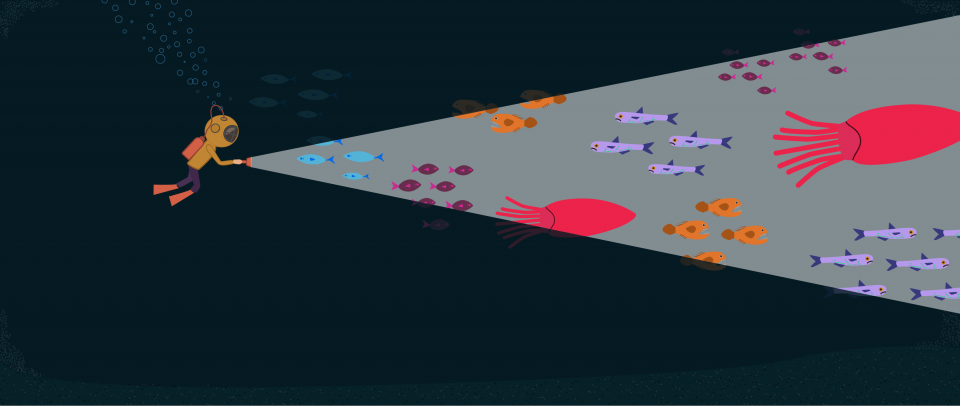Keeping Creative Passions Alive: How to Demolish the Work / Play Divide
It’s time for another step in our quest to bridge the work/life gap of the creative. Those of you following along may found yourselves in a pretty uncomfortable place. You have gained awareness of all these passions, and now, instead of success being a destination that motivates you, you had to redefine it as a journey. How on earth can one enjoy this ride we call life with little to look forward to and all of these passions languishing about? The answer: Put more play in your work. How? Another simple answer: Redefine the words “work” and “play.” To explain, let’s talk a bit about how creatives see work vs. play.
What is Work? What is Play?
Currently, many of us define work and play in generic ways. “Work” is considered an obligation. It’s never fun, nor is it supposed to be fun, because if work is fun we think we are doing it wrong or not working hard enough. Work, traditionally, is not something we should enjoy. In fact, most of us define work as something that is in direct opposition to and separate from play.
On the other hand, many of us define play as foolish and irresponsible, but fun. Play is something for children or for those adults that don’t do “real work.” It’s a waste of time and not progressive in any way. Play appears to be in direct opposition to and separate from work.
These current definitions of work and play reveal a defined line between the two that’s holding us back from bridging the work/life gap.
The Problems with Work Vs. Play
The first issue that pops up with these definitions of work and play is a clear inability to integrate our passions into our careers. This happens because passions are what bring us joy, yet work is defined as not enjoyable. Therefore, it appears foolish to include passions in our work because doing so will invalidate our professional status or lessen the progressive nature of our work.
Secondly, as discussed in my previous piece about realizing our passions, not including our passions in our work leads to a lack of contentment and happiness with our careers and ourselves.
The largest problem is that work and life appear to be on opposite spectrums. One is hot, the other cold. One is yin and one is yang. Defining work and play in this way actually creates the work/life gap in the first place! Perhaps, by changing our definitions of work and play, we may build a bridge across this work/life gap − but what about removing the gap all together?
The question is: How can we change the way we perceive work vs. play? Thankfully, it’s not as hard as you think.
Re-Defining Work and Play
Step 1 – Take a moment, sit back, and ask yourself, “Why are work and play separate?” Write down your answer, and if you were not able to come up with an answer, skip to step 2. Next, sit back and ask yourself, “What is the direct benefit to me of work and play being separate?” Write this answer down as well. I must warn you there may not be a good answer. However, if you do see one or many answers, ask a third question, “What are the benefits of these two things being the same?” I’m willing to bet the farm that the benefits outweigh those keeping work and play separate.
Step 2 – Write down in a big blank space the word “WORK.” In another color or style, I’d like you to list out all of the components that “WORK” encompasses, possibly including income, stress, teamwork, design, etc. Then, look at all these components and locate the ones that could also be considered play. Put a “P” next to each of those (for instance, “design” could be work and play for some of us).
Step 3 – In another blank space, write the word “PLAY.” Now, in a separate color or style, list out all of the components of play you can think of (time wasting, fun, design, art, etc.), and label the ones that could also be work as you did above. Use a W instead of P.
Step 4 – Go ahead and cross out all the components from either list that don’t benefit you or make you happy.
Step 5 – Now, look at your lists. Notice the few differences between what you think make up work and what you think make up play.
Step 6 – Draw a big circle around all the work and play components so that the circle you draw encompasses both the labels WORK and PLAY and all their corresponding components. Label this circle “LIFE”.
Step back and look: Work and play are only different because YOU hold onto those things that don’t benefit you and put them in a separate category from play/life so you can seem “professional.” Once you let go of the separation, we can see that both work and play are pretty similar and just a slice of your life!
The Big Reveal
Ok, ok… I realize that at this point you are thinking: “What a cute exercise, but what is the point already?” The point is that YOU created the work/life gap, and therefore, YOU can destroy it! No one said you couldn’t make money by playing. That may be a belief that had possibly been instilled in you from a very young age based on the perception of work and play as separate entities. This exercise shows you that they are not… really.
Work and Play Moving Forward
I realize how unreal this sounds. Scribbling on a piece of paper somehow magically redefines the behavior patterns and beliefs that existed all your life. But as soon as you realize that the work/life gap is your own creation, I promise your view on everyday work and life will change.
What’s the point in separating the two? Begin to see places in your life where the two are separate, and realize what makes no sense. As you reprogram your brain, these observations will unwind from your previous beliefs. The breakdown of old barriers makes room for new beliefs that benefit you, your passions, and your career.
All of this redefining will set the table to understand that the “work/life balance” is a myth. In fact, it is a sickness that holds creatives back. Even embracing this concept of bridging the work/life gap is a myth and something to avoid.
In our next entry, I will explore these points further and begin the integration of work/life.
Now go out and play!





